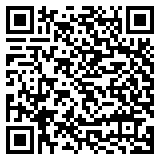The connectivity of international businesses has generated some concepts that weren’t important in the past. Being able to read a company or product name in different scripts is one of these phenomena. However, language experts, such as translators and interpreters, have developed different techniques for adapting words to different languages and writing systems.
This article answers the question “what is transliteration?” and explains where it is used for enhanced business communication.
What Does Transliteration Mean?
Transliteration refers to taking words, phrases, or entire parts of text from one writing system or script to another. The idea is to represent the lexeme, letter, or text in question literally in another writing system – a symbol for symbol. For instance, the capital of the Russian Federation is Moscow (in the English alphabet). In the Russian Cyrillic alphabet, which is the most common writing system of the languages of Russia, this word is written as Москва. If we transliterate it in English, we get Moskva. The transliteration meaning and purpose are to help readers, learners, and speakers to get the approximate writing of the original lexeme, letter, or text in another writing system.
Translation vs. Transliteration
Translation and transliteration are almost homophones, and people often mistake them for each other, but their meanings are pretty distant. The transliteration definition clearly explains that this term is used to present a certain language unit from one script in another one verbatim, as explained above.
On the other hand, translation means conveying the meaning of lexemes, sentences, or large batches of text from one language into another. When we transfer the meaning of words between languages orally, it is called interpreting. So, in the case of transliteration vs. translation, it’s important to understand that transliteration doesn’t deal with the meaning of the language units in question – it’s rather a matter of formatting than interpreting. Translation, on the other hand, must include both the transfer of lexical meaning between two or more languages, with a high level of adaptation to convey the intended meaning.
Transliteration in Business
Transliteration is typically applied on the border between languages. It usually contains a certain level of cultural localization, especially in business and marketing. When a globally present brand needs to be written in another language that uses another script, we usually have transliteration. For instance, Adidas is أديداس is Arabic, and it’s pronounced /adi:da:s/, retaining the spelling and pronunciation from the Latin alphabet and the original language (which is German in this case). If we get back to Russian, this brand name is transliterated as Адидас. In Korean, it’s transliterated as 아디다스, and the back-transliteration would be Adidaseu, so that it’s pronounced /adi:da:s/, just as the original.
However, brand names are sometimes translated or at least stay somewhere between translation and transliteration. For instance, Etihad Airways in Arabic is written like this: شَرِكَة ٱلْاِتِّحَاد لِلطَّيْرَان. If we transcribe the pronunciation into the Latin alphabet, it is as follows: /sharikat al-ittiḥād li-ṭ-ṭayarān/, which means “Etihad aviation company”. But the company decided to seek a global presence as Etihad Airways.
Also, businesses from non-Latin countries, writing-wise, that are aiming at an international audience typically transliterate their names in English. For instance, a company operating in Bulgaria might want to transliterate its name into English to attract English-speaking travelers.
Modern Tech and Transliteration
As you may have noticed, transliteration has the most practical use when we need to make a business name properly “work” in another language and writing system. By “work”, we mean that a company should sound and read the same as it does in the original language.
This approach to keeping brand names the same as the original is important for the global presence of the brand in question. Just like personal names typically aren’t translated into other languages, but rather transliterated or transcribed, the same goes for companies and brand names.
With the development of AI and language-learning models, transliteration becomes an even more important language and business methodology. The advent of communication technology makes global business collaboration easier, but it’s important to integrate the existing transliteration and translation standards in those new tools.
Transliteration In a New Era
Globalization and technological progress have made languages more connected than before. Localization, translation, and transliteration services have therefore become essential for many businesses and individuals. In the time ahead, some languages will keep growing in terms of their global importance (e.g., Mandarin Chinese, Vietnamese, etc.). In that context, the role of transliteration will keep expanding, ensuring more efficient communication.
Day Interpreting can help

Pavle has a decade and a half of linguistic experience, first as an ESL teacher, then as a translator and interpreter. In the last third of his career quest so far, he has turned to content marketing, as the most exciting branch of applied linguistics.
Having worked as a content specialist and editor while following the latest linguistic and tech trends, he has specialised in bringing the current affairs in the lingtech sector to the spotlight.
When he’s not crafting his briefs and drafts, and writing his stuff, he likes to pluck a chord or two on his old guitar, or just go to a pub quiz; a father of three, a husband of one.



0 Comments